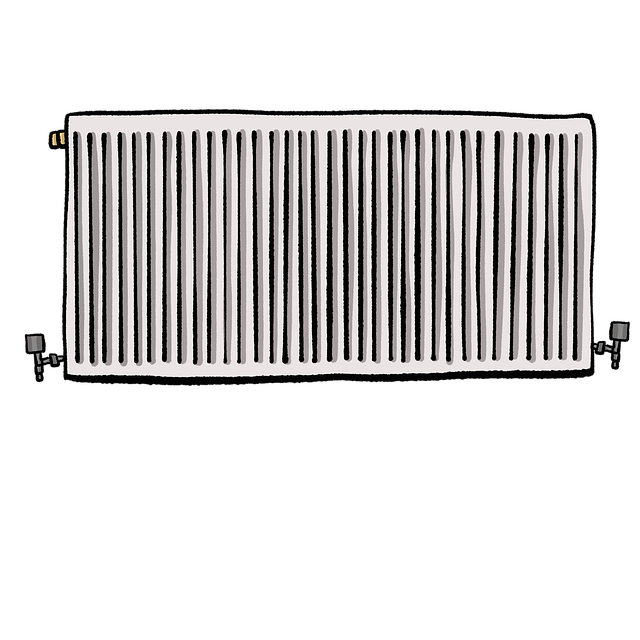A radiator bleeding service is crucial for maintaining a vehicle's cooling system efficiency, preventing leaks and air bubbles. While DIY is possible, professionals use specialized tools to ensure optimal performance. Regular maintenance includes checking for leaks, inspecting for damage, and performing bleeds to extend radiator lifespan and avoid costly repairs.
Radiators are an essential component of your vehicle’s cooling system, ensuring optimal performance. This time-saving guide delves into the critical aspect of radiator maintenance, specifically focusing on the crucial ‘radiator bleeding service’. Understanding this process is key to preventing costly repairs and keeping your car running smoothly. From preparation tips to step-by-step instructions and common issues, this comprehensive overview ensures you’re equipped to maintain your vehicle’s cooling system effectively.
- Understanding Radiator Bleeding Service
- Preparing for the Maintenance Process
- Step-by-Step Guide to Radiator Bleeding
- Common Issues and Their Solutions
- Regular Maintenance Tips for Longevity
Understanding Radiator Bleeding Service

A crucial aspect of radiator maintenance is understanding the significance of a radiator bleeding service. This process involves removing air bubbles and contaminants from your vehicle’s cooling system, ensuring optimal performance. Air can enter the system during top-ups or repairs, leading to reduced efficiency and even antifreeze leaking from radiator.
A DIY radiator recirculation is possible for those comfortable with automotive tasks, but it requires careful steps to prevent damage. For many, seeking professional assistance is a time-saving solution, especially when addressing persistent stop radiator leaks fast. A skilled mechanic will employ specialized tools to remove air efficiently, guaranteeing your vehicle’s cooling system operates smoothly and safely.
Preparing for the Maintenance Process

Preparing for the maintenance process is key to ensuring a smooth and efficient radiator bleeding service. Before you begin, gather all the necessary radiator bleeding tools needed, such as a bleed kit, new O-rings or seals, and a container for collecting old fluid. It’s also important to park your car on a level surface to prevent any leaks from causing an unsafe situation.
Additionally, check for any car cooling system problems that might require attention before proceeding. Inspect the radiator hoses for cracks or damage, and ensure all connections are secure. This proactive approach will not only make the maintenance process more effective but also help you avoid unexpected issues during the bleeding old radiators.
Step-by-Step Guide to Radiator Bleeding

Performing a radiator bleeding service is an effective way to keep your car’s cooling system in top condition and prevent any potential radiator hose replacement or car cooling system problems. Here’s a straightforward, step-by-step guide to help you through the process.
First, locate your vehicle’s radiator—it’s typically positioned at the front of the engine bay. Next, gather the necessary tools: a jack, jack stands, a bleeding kit (including a bleeder screw and a catch container), and new coolant if needed. Safely raise and support the car with the jack and jack stands before opening the radiator cap. Release any pressure by fully opening the radiator valve for a few seconds. Now, connect the bleeder hose to the bleeder screw and slowly close the valve until you feel resistance. Start the engine and let it run at idle while monitoring the coolant level. If the level drops, top it up with the appropriate coolant before repeating the process until no air bubbles are observed.
Common Issues and Their Solutions

Many common issues can be resolved with proper radiator maintenance. One of the most frequent problems is a low coolant level, often caused by leaks or excessive evaporation. This can be easily addressed through regular top-ups and checking for any signs of antifreeze leaking from the radiator. If left unattended, low coolant levels can lead to overheating, damaging the engine.
Another recurring issue requiring attention is air trapped within the system, which can prevent efficient heat transfer. This typically needs a radiator bleeding service, where specialized tools are used to remove air bubbles and ensure optimal performance. Additionally, keeping an eye out for any unusual noises or vibrations from the boiler repair area can help identify potential problems early on, saving time and money in the long run.
Regular Maintenance Tips for Longevity

Regular maintenance is key to ensuring your radiator remains efficient and prolongs its lifespan. One of the most important tasks is keeping an eye out for any signs of leaks, as promptly addressing a leaky radiator can prevent significant damage and costly repairs. A simple yet effective step is to regularly inspect the radiators for any visible cracks or corrosion. Corrosion can weaken the structure and affect heat transfer, so treating it early with appropriate cleaning solutions can be a game-changer.
Additionally, performing a radiator bleeding service is crucial in removing air pockets from the system, which can hinder its performance. This process involves draining and refilling the radiator with fresh coolant, ensuring optimal operating conditions. By incorporating these maintenance tips into your routine, you’ll not only extend the life of your radiators but also ensure they deliver efficient heating for years to come, preventing the need for frequent replacements or costly repairs.
Maintaining your radiator is an essential task that can save you time and money in the long run. By understanding the process of radiator bleeding service, preparing adequately, and following a step-by-step guide, you can effectively address common issues and ensure your radiator’s longevity. Regular maintenance will not only optimize your heating system’s performance but also prevent costly breakdowns. Remember, a well-maintained radiator is key to a comfortable and efficient home environment.
